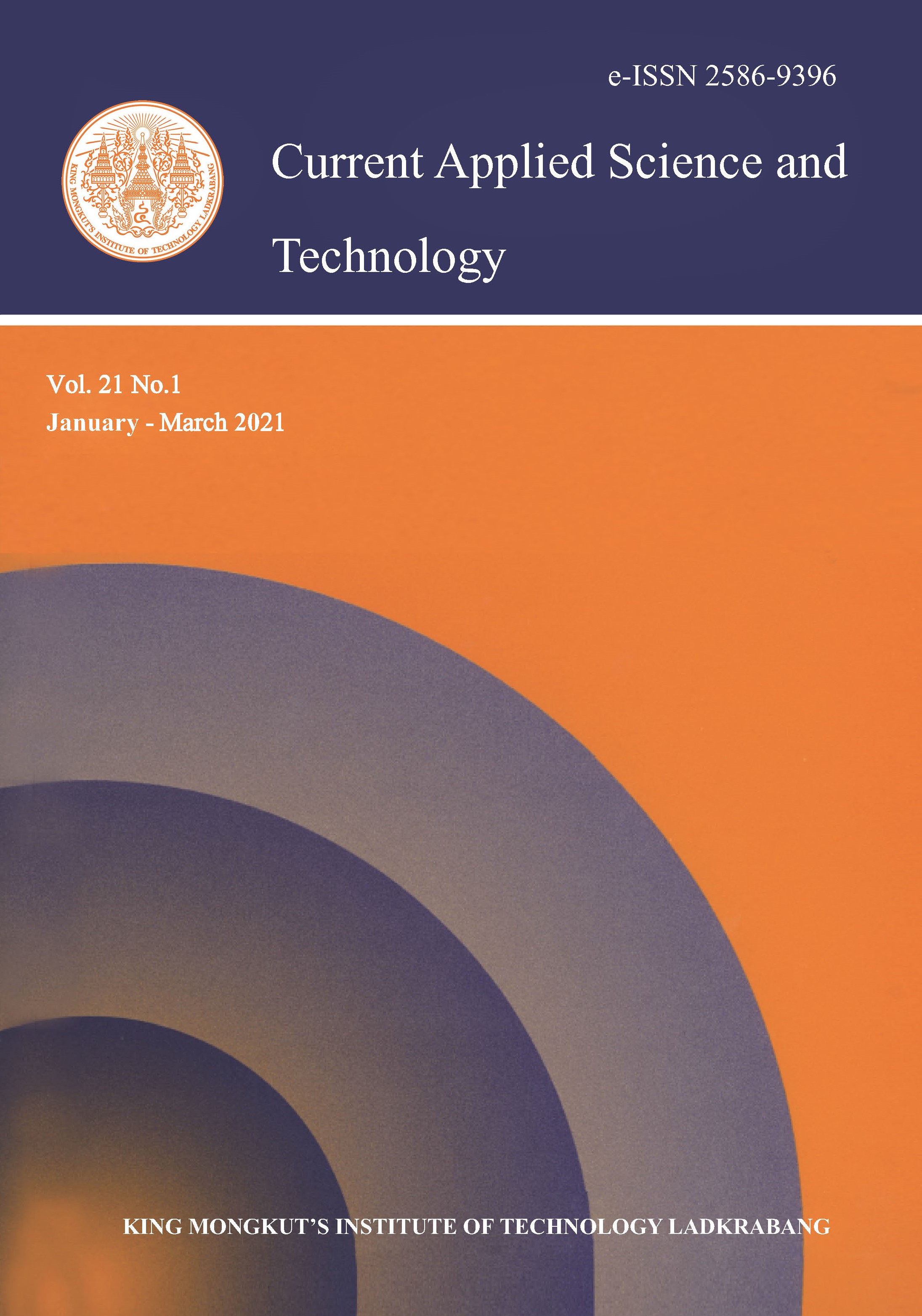Development of Fermented Prunus Vinegar: Chemical Characterization and Antioxidant Activity
Main Article Content
Abstract
Keywords: chemical properties; antioxidant activity; fruit vinegar; Prunus; sensory evaluation
*Corresponding author: Tel.: +66 4 374 2620; fax: +66 4 373 2620.
E-mail: wilawanboonsupa@ymail.com
Article Details
Copyright Transfer Statement
The copyright of this article is transferred to Current Applied Science and Technology journal with effect if and when the article is accepted for publication. The copyright transfer covers the exclusive right to reproduce and distribute the article, including reprints, translations, photographic reproductions, electronic form (offline, online) or any other reproductions of similar nature.
The author warrants that this contribution is original and that he/she has full power to make this grant. The author signs for and accepts responsibility for releasing this material on behalf of any and all co-authors.
Here is the link for download: Copyright transfer form.pdf
References
Boonsupa, W., Pimda, W., Sreeninta, K., Yodon, C., Samorthong, N., Bou-on, B. and Hemwiphat, P., 2019. Development of fermented banana vinegar: Chemical characterization and antioxidant activity. Journal of Food Health and Bioenvironmental Science, 12(1), 21-27.
Xia, T., Zhang, B., Duan, W., Zhang, J. and Wang, M., 2020. Nutrients and bioactive components from vinegar: A fermented and functional food. Journal of Functional Foods, 64, 1-14.
Chen, Y., Huang, Y., Bai, Y., Fu, C., Zhou, M., Gao, B., Wang, C., Li, D., Hu, Y. and Xu, N., 2017. Effects of mixed cultures of Saccharomyces cerevisiae and Lactobacillus plantarum in alcoholic fermentation on the physicochemical and sensory properties of citrus vinegar. LWT Food Science and Technology, 84, 753-763.
Aubert, C. and Chalot, G., 2020. Physicochemical characteristics vitamin c and polyphenolic composition of four European commercial blood-flesh peach cultivars (Prunus persica L.Batsch). Journal of Food Composition and Analysis, 86, 1-11.
Nourbakhas, H., Emam-Djomeh, Z. and Mirsaeedghazi. H., 2015. Effect of operating parameters on physicochemical properties of red plum juice and permeate flux during membrane clarification. Desalination and Water Treatment, 54(11), 3094-3105.
Lee, J.A., Ko, J.H., Jung, B.G., Kim, T.H., Hong, J.I., Park, Y.S. and Lee, B.J., 2013. Fermented Prunus mume with probiotics inhibits 7,12-dimethylbenz[a] anthracene and 12-O-tetradecanoyl phorbol-13-acetate induced skin carcinogenesis through alleviation of oxidative stress. Asian Pacific Journal of Cancer Prevention, 14, 2973-2978.
Ozen, M., Ozdemir, N., Filiz, B.E., Budak, N.H. and Kok-Taş, T., 2020. Sour cherry (Prunus cerasus L.) vinegars produced from fresh fruit or juice concentrate: Bioactive compounds, volatile aroma compounds and antioxidant capacities. Food Chemistry, 309, https://doi.org/ 10.1016/j.foodchem.2019.125664
Aguiar, A., Nascimenta, R.A.D.A., Ferretti, L.P and Goncalves, A.R., 2005. Determination of organic acids and ethanol in commercial vinegars. Brazilian Journal of Food Technology, 50 SIPAL, Macro., 51-56.
Brand-Williams, W., Cuvelier, M.E.and Berset, C., 1995. Use of a free radical method to evaluate antioxidant activity. LWT-Food Science and Technology, 28, 25-30.
Singleton, V.L., Orthofer, R.and Lamuela-Raventós, R.M., 1999. Analysis of total phenols and other oxidation substrates and antioxidants by means of Folin-Ciocalteu reagent. Methods in Enzymology, 299, 152-178.
Davidovic, S.M., Veljović, M.S., Pantelić, M.M., Baošić, R.M., Natić, M.M., Dabić, D.Č., Pecić, S.P.and Vukosavljevic, P.V., 2013. Physicochemical, antioxidant and sensory properties of peach wine made from Redhaven cultivar. Journal of Agricultural and Food Chemistry, 61(6), 1357-1363.
Dynesen, J., Smits, H., Olsson, L. and Nielsen, J., 1998. Carbon catabolite repression of invertase during batch cultivations of Saccharomyces cerevisiae: the role of glucose, fructose, and mannose. Applied Microbiology and Biotechnology, 50, 579-582.
Pongdam, S., 2017. Cellular respiration of acetic acid bacteria: Oxidative fermentation and applications. SDU Research Journal, 10(3), 203-236.
Boonsupa, W., 2019. Chemical properties, antioxidant activities and sensory evaluation of berry vinegar. Walailak Journal of Science and Technology, 16(11), 887-896.
Liu, H., Jiang, W., Cao, J. and Li, Y., 2019. Changes in extractable and non-extractable polyphenols and their antioxidant properties during fruit on-tree ripening in five peach cultivars. Horticultural plant Journal, 5(4), 137-144.
Puerta-Gomez, A.F. and Cisneros-Zevallos, L., 2011. Postharvest studies beyond fresh market eating quality: Phytochemical antioxidant changes in peach and plum fruit during ripening and advanced senescence. Postharvest Biology and Technology, 60(3), 220-224.
Donovan, J.L., Meyer, A.S. and Waterhouse, A.L., 1998. Phenolic composition and antioxidant activity of Prunus and prune juice (Prunus domestica). Journal of Agricultural and Food Chemistry, 46, 1247-1252.
Towantakavanit, K., Park, Y.S.and Gorinstein, S., 2011. Bioactivity of wine prepared from ripened and over-ripened kiwifruit. Central European Journal of Biology, 6, 205-215.


